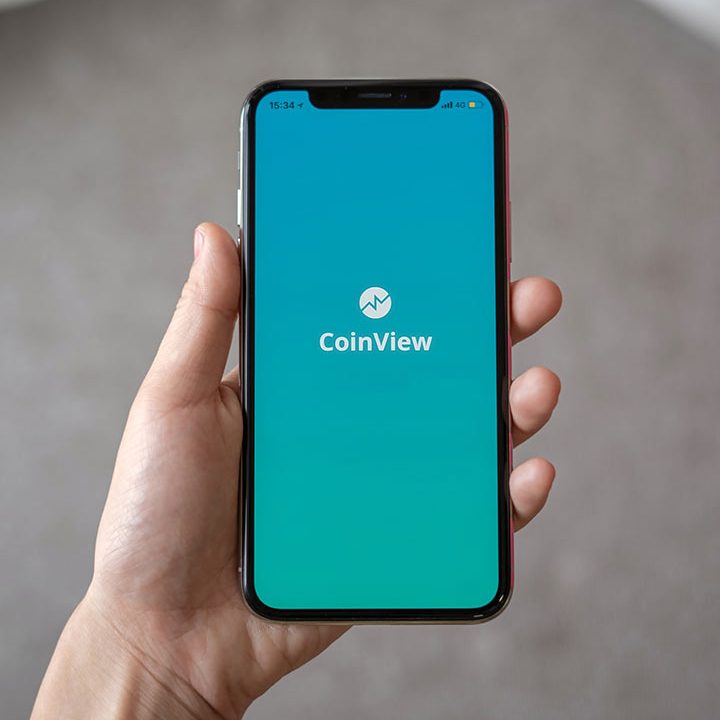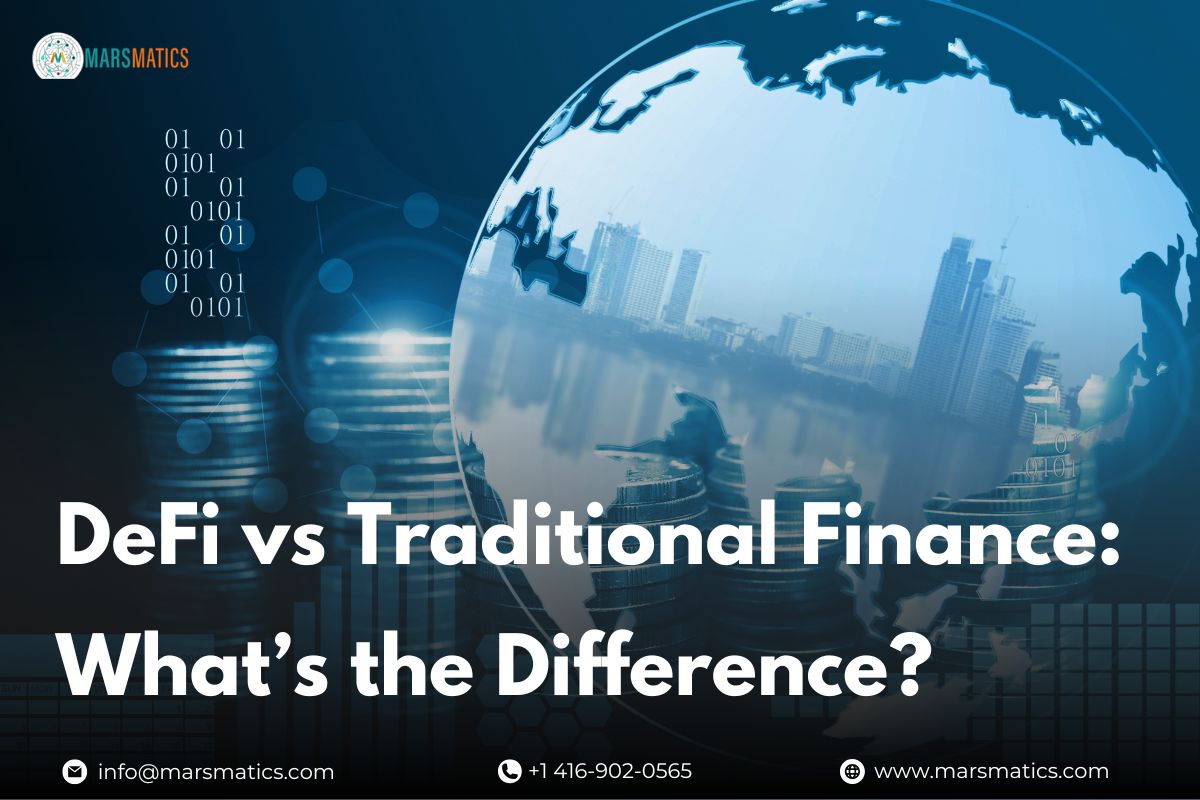DeFi vs Traditional Finance: What’s the Difference?
Banks have been the backbone of our financial lives for centuries—but what if we no longer needed them? In recent years, a new system has emerged that challenges everything we know about money, loans, and investing. It’s called decentralized finance, or DeFi. As it gains popularity, more people are asking: what’s the real deal with DeFi vs Traditional Finance? In this blog, we’ll explore the difference between DeFi and traditional finance, and why it could change how you save, invest, and borrow in the future.
What is Traditional Finance?
Traditional finance is the system most of us are used to. It includes banks, credit unions, insurance companies, and government-backed institutions. In this model, your money is managed by third parties—you need a bank to store your savings, a lender to approve your loan, and a broker to invest in stocks. Every transaction goes through an intermediary, which adds time, fees, and sometimes restrictions. When comparing decentralized finance vs centralized finance, the biggest difference is control. In centralized finance, institutions are in charge. That’s why many people are now exploring the benefits of decentralized finance, where users have more freedom, lower fees, and access to financial tools without middlemen.
What is Decentralized Finance (DeFi)?
Decentralized Finance, or DeFi, is a new way to access financial services without relying on banks or traditional institutions. Instead of using a bank to send money or get a loan, DeFi uses blockchain technology and smart contracts to let people interact directly with each other. Everything happens on decentralized platforms, meaning no single company or authority controls your money.
One of the biggest benefits of decentralized finance is that it gives users full control over their assets, offers lower fees, and allows anyone with internet access to participate—no paperwork or bank approvals needed. When comparing DeFi vs Traditional Finance, DeFi stands out for its openness and transparency. However, it also highlights the limitations of traditional banking, such as slow processing times, hidden fees, and lack of access in many parts of the world. DeFi aims to fix those issues by creating a more inclusive and efficient system for everyone.
Key Differences Between DeFi and Traditional Finance:
| Aspect | Traditional Finance | DeFi (Decentralized Finance) |
| Intermediaries | Required (banks, brokers) | Not needed (peer-to-peer) |
| Accessibility | Limited (especially in developing countries) | Open to anyone with internet |
| Speed | Slower (bank hours, processing time) | Instant or near-instant |
| Fees | High fees | Minimal fees |
| Transparency | Limited (closed systems) | High (open-source, blockchain-based) |
| Control | Institutions have custody | Users hold their own keys |
Advantages of DeFi Over Traditional Finance:
| Advantage | Description |
| No Financial Intermediaries | DeFi removes financial intermediaries like banks or brokers, letting users interact directly. |
| Trustless Transactions | DeFi uses smart contracts to enable trustless transactions, reducing the need for third-party oversight. |
| Peer-to-Peer Lending | With peer-to-peer lending in DeFi, users can borrow or lend directly, often with better rates and fewer requirements. |
| Solves Traditional Banking Limits | DeFi addresses the limitations of traditional banking, such as slow transfers, high fees, and limited access. |
| Global and 24/7 Access | Anyone with internet can access DeFi platforms anytime, anywhere—no business hours or location barriers. |
Challenges of DeFi Compared to Traditional Finance:
- Unlike traditional systems with legal oversight and financial intermediaries, DeFi operates in a mostly unregulated space—making it riskier for users.
- Many people find DeFi platforms complex, especially when trying features like peer-to-peer lending in DeFi, which can be confusing for beginners.
- Bugs or coding errors in smart contracts can be exploited, leading to loss of funds—highlighting a major difference between DeFi and traditional finance.
- Since anyone can create a DeFi project, scams are common. This risk doesn’t exist at the same level in traditional systems with regulated financial intermediaries.
- In DeFi vs Traditional Finance, traditional banks offer customer service and fraud protection—DeFi does not, putting all responsibility on the user.
Can DeFi and Traditional Finance Coexist?
Yes, and in many ways—they already are. While DeFi introduces a new way of managing money without banks, traditional finance still plays a vital role in the global economy. The reality is that both systems have strengths: traditional finance offers stability and regulation, while DeFi brings innovation, speed, and wider access.
Rather than replacing one another, we’re beginning to see DeFi vs Traditional Finance evolve into collaboration. This is often called “CeDeFi” (Centralized Decentralized Finance), where traditional institutions explore DeFi tools while still complying with regulations. As more people seek flexible, tech-driven financial options, the future may lie in a hybrid model that blends the best of both worlds.
Final Thoughts:
The world of finance is changing fast, and understanding DeFi vs Traditional Finance can help you make smarter financial choices. While traditional finance still relies on financial intermediaries, DeFi offers a new model built on trustless transactions, transparency, and user control. From peer-to-peer lending in DeFi to global, 24/7 access, decentralized finance is opening doors for more people around the world. Whether you’re ready to dive in or just getting started, learning how both systems work can give you a better handle on the future of money.
FAQs
Q1: What is the main difference between DeFi and traditional finance?
A: The main difference is that DeFi operates without intermediaries using blockchain, while traditional finance relies on centralized institutions like banks.
Q2: Is DeFi safer than traditional banking?
A: DeFi offers transparency and control, but it also carries risks like hacks and lack of regulation, whereas traditional banking provides legal protection and stability.
Q3: Can you earn interest through DeFi like a traditional savings account?
A: Yes, through lending protocols and liquidity pools, users can earn interest, often at higher rates—but with higher risk.
Q4: Do you need a bank account to use DeFi?
A: No, all you need is a crypto wallet and internet access, making DeFi more inclusive than traditional finance.








